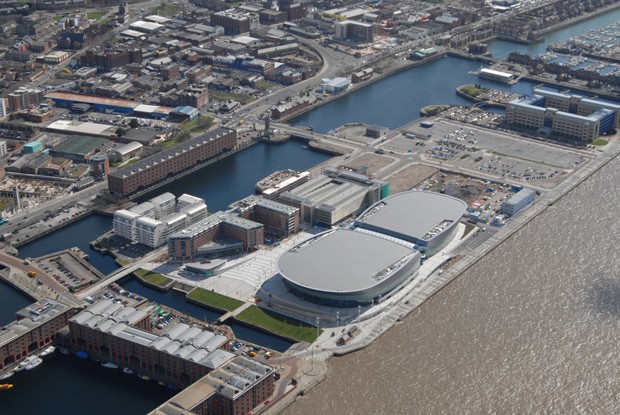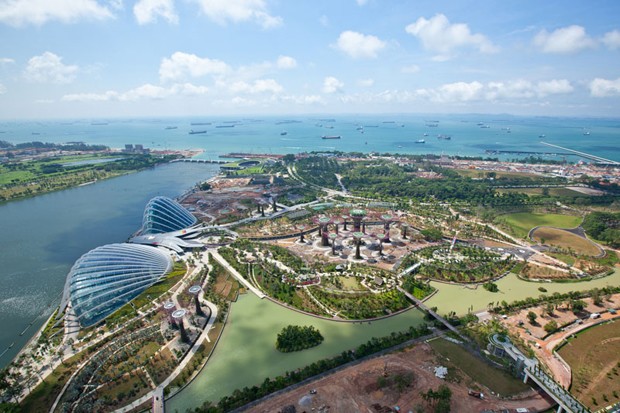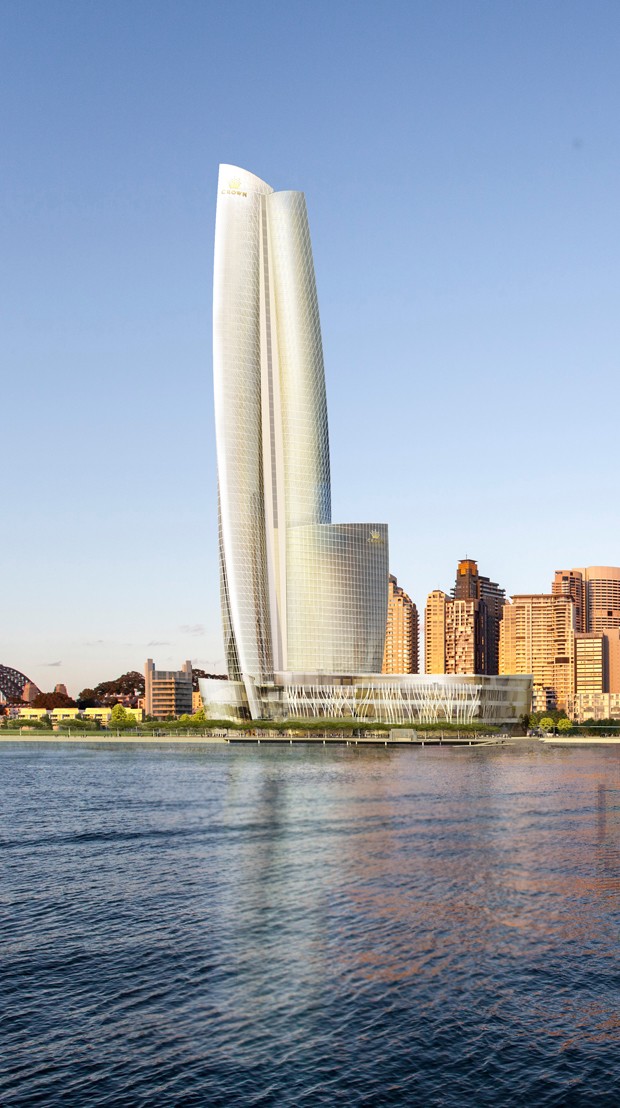Chris Wilkinson, director at Wilkinson Eyre Architects, studied architecture at the Regent Street Polytechnic (now the University of Westminster) from 1964 – 1970.
He set up his own practice in 1983 and has previously worked at Denys Lasdun & Partners, Foster Associates, Michael Hopkins Architects, and Richard Rogers & Partners.
Architecture & Design spoke to Wilkinson about lessons he has learnt in setting up his own practice, the changing nature of architecture and why he admires Norman Foster.
You set up your own practice in 1983. What do you know now that you wish you had known then?
I wish I had set up on my own earlier. The past 30 years in practice has been so enjoyable and I wish I’d been able to take advantage of some of the opportunities that might have come my way if I had been in the position to accept them.
I am passionate about architecture and if I could go back and teach myself one thing it would be to develop the confidence to really take on – and win – design competitions. There’s a great skill to learn in understanding the way a brief is written and then extracting from that what the client really wants. You also have to quickly come up with ideas and to go with the strongest. You can’t play safe – you really have to go for it. I feel like I’ve come to a point in my career where I’m comfortable with that process, but I would have found the experience invaluable 30 years ago.
What has been the most significant change in architecture over the past 30 years?
Without question it’s been the introduction of computer imaging and 3D modelling software, which has given us a new opportunity to explore complex geometries in a way that wouldn’t have been possible when I began practicing.
The first major project we designed in 3D was the Liverpool Arena and Conference Centre, which was opened by Ringo Starr in 2008 to mark the start of the city’s one-year term as the European Capital of Culture. The centre is a large, complex building that sits on an exposed site on the waterfront in Liverpool, next to the World Heritage site. We developed an aerodynamic, curvilinear form without any vertical surfaces that unifies all the functions of the building within a single enclosure, weathers the conditions and creates a landmark that complements the iconic nature of the site.
This was the first project where I knew for sure that everything had changed: computer models stopped being an interesting tool for visualisation and became the primary way we exchanged design information with consultants and subcontractors. This way of working gave us unprecedented control over the detailing and build, meaning we could achieve an innovative, complex building that remained true to the initial design intent.

Liverpool Arena and Conference Centre
What is one thing that has changed that you wish hadn't?
The reverse side of the coin of all the benefits that computer modelling has brought is that the skills needed to use the software are now emphasised over hand-drawing by the new generation of architects. I’m convinced that drawing and sketching is essential to the design process – to say nothing of the enjoyment and relaxation it provides – and it’s sad that many young architects miss out. I carry a sketchbook with me everywhere I go and it provides me with another way of thinking and resolving ideas in my head, which is vital to maintaining an understanding of a building project throughout its lifespan.
You've won several awards. What has been the most important award?
In 2001 and 2002 we won the RIBA Stirling Prize in consecutive years and this year we’ve just been awarded our second consecutive RIBA Lubetkin Prize for International Architecture for Gardens by the Bay in Singapore. We were the first practice to win either prize consecutively, and there’s a pleasing symmetry to the wins.

Wilkinson Eyre's Singapore Gardens by the Bay
The first Stirling Prize, for Magna, a science adventure centre housed in a former steelworks in Rotherham, was a total surprise, and along with the second, for the Gateshead Millenium Bridge over the River Tyne, marked the fruition of a period where we were rising to national prominence in the UK and opened a lot of doors for us. Both were Millenium Projects in a period of great post-millennial optimism where public money was being used to kick-start an urban renaissance. I think both projects have made a valuable contribution to that goal and become popular landmark attractions.
Our Lubetkin prizes mark the increasing need for UK architects to compete internationally and also highlights a change in the scale of our work. When it was completed in 2010, the Guangzhou International Finance Centre was the tallest building ever completed by a British practice, at 440m. The cooled conservatories at Gardens by the Bay are unique in the world – exploring climate change and sustainability in an innovative way.
What projects are you working on at the moment?
Obviously there’s the Crown Sydney development in Barangaroo, which I think will make an elegant, sculptural contribution to the waterfront in one of the world’s most beautiful cities.

Crown Sydney development in Barangaroo
We’ve also just been appointed to design a tower on Leadenhall Street in the City of London, which is also a hugely significant project for us – there’s only a very small group of architects who have been trusted to build tall in the city, so to have the chance to join that club is an honour.
In Kings Cross we’re overseeing the restoration and reconstruction of three grade II listed Gas Holders, repurposing the 19th century structures to enclose housing that will provide 144 homes and create an exciting contrast of old and new.
A project I have taken particular interest in is our Cancer Caring Centre at the Churchill Hospital in Oxford for the Maggies charity. Maggies was founded by Maggie Jencks, who started a project to commission well designed, humane cancer care centres on a domestic scale after her own diagnosis with cancer. We sadly lost Maggie in 1995, but she has left an incredible legacy of beautiful buildings throughout the UK. Our contribution takes the form of a treehouse overlooking listed woodland, supported on piloti with its elevations faceted to maximise the relationship between inside and outside space.

Cancer Caring Centre at the Churchill Hospital, Oxford
We’re also working on the comprehensive restoration and re-use of two iconic buildings by Sir Giles Gilbert Scott, one of the giants of 20th century British architecture: The New Bodleian Library in Oxford, one of the finest collections of books anywhere in the world; and Battersea Power Station, an icon on the London skyline and the largest brick building in Europe.
Which fellow architect do you admire?
There are two, both of whom I’ve had the pleasure of working with: Norman Foster and Richard Rogers. I was at Foster’s in the 1970s and Norman remains an inspiration. I recently visited the Sainsbury Gallery at the University of East Anglia and the building looks as stunning today as it did 40 years ago.
I admire Richard for many reasons, but above all for his humanity and his inspiring designs.
If you weren't an architect, what would you be doing?
I would be a painter, which is how I spend most of my spare time, both in London and in Italy. I work in acrylic on canvas, creating larger abstract paintings. I hope to exhibit them next year. Fellow architect Will Alsop and I have been discussing holding an exhibition together in London, so I’m looking forward to that with anticipation.

